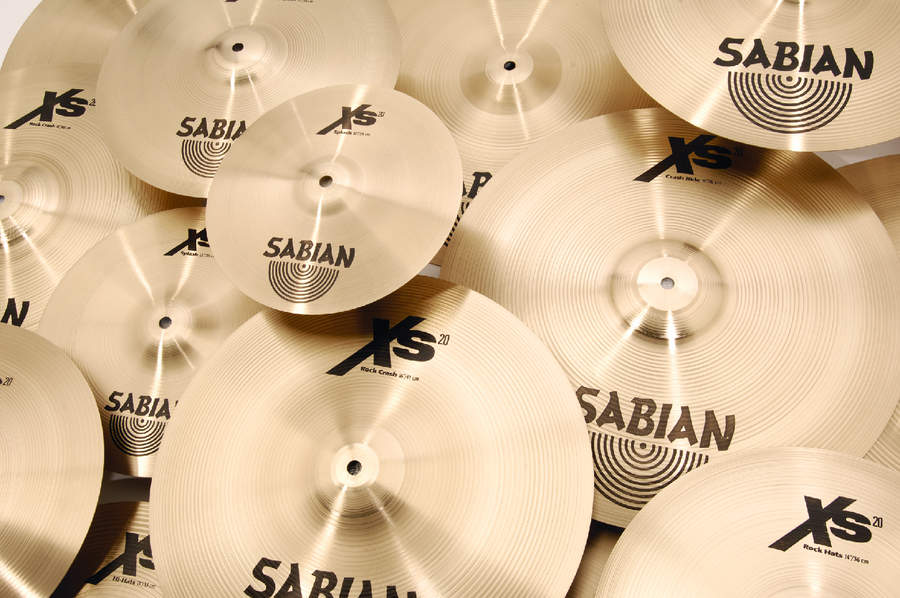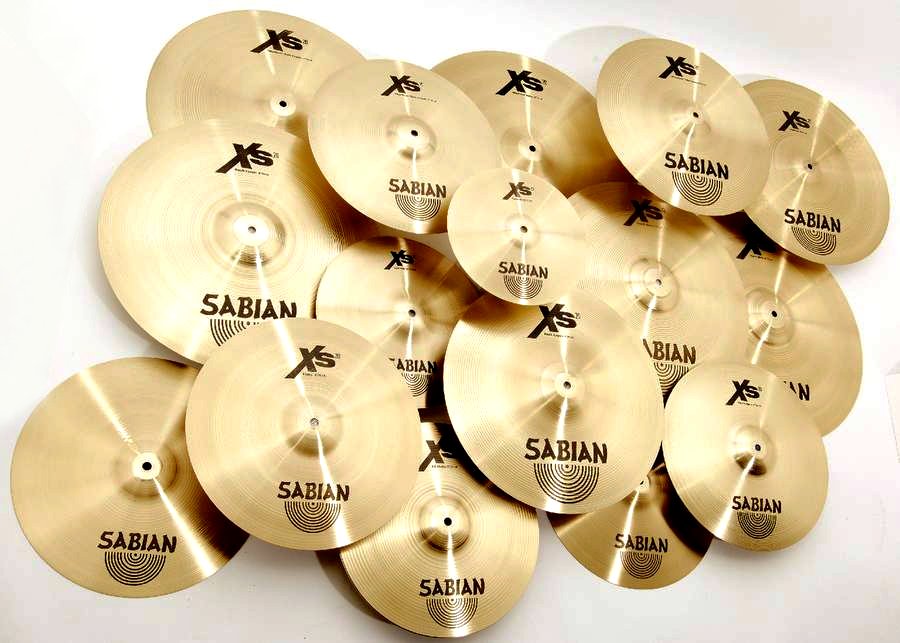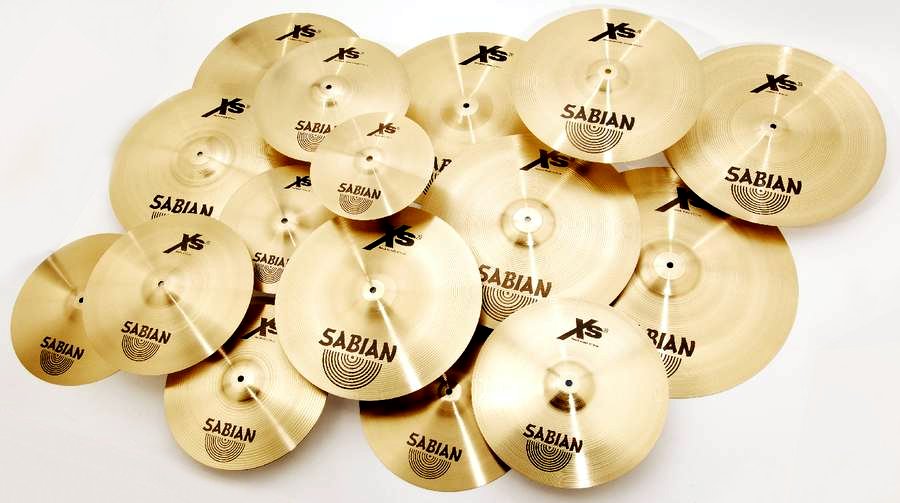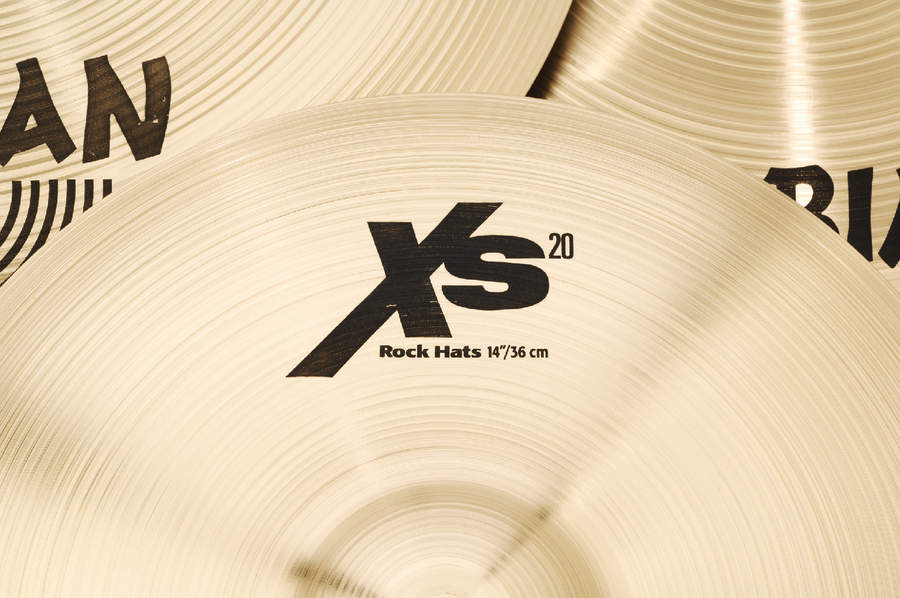MusicRadar Verdict
While cheaper cymbals have nasty overtones and more expensive ones have character and breadth, the Xs20s are somewhere in between. If you're moving up from Sabian's B8-Pros you'll be in heaven, but the Xs20s still lack the scope and penetration of Sabian's top pro lines. Which, at the price, is just what you'd expect.
Pros
- +
You get the Sabian logo and B20 alloy at an affordable price.
Cons
- -
Generally lacking fullness and decays rather quickly.
MusicRadar's got your back




The vast majority of semi-pro drummers want quality at an affordable price. Producing a good cymbal is not just about expensive alloys, it's about the hours spent on tempering, hammering, lathing and so on - it's a labour intensive process. Hence Sabian spent 10 years figuring out how to make B20 cymbals with minimal labour. They eventually came up with the Xs20s, and now the Xs20s have undergone new lathing to make them even more desirable.
Facelift
The difference with these Xs20s is largely cosmetic. Sabian has applied AA style lathing, "the traditional, wide-blade cut", as a result of customer pressure. The lathing results in greater manufacturing consistency, but the sound remains unaltered. So what is that sound?
Well, the series is divided into Rock and Medium types. There are two rides - a 20" Medium and a Rock version, plus an 18" crash-ride. The Medium ride is a sweet sounding cymbal, fairly soft and smooth, with a thick stick response.
The bell is small but sings out brightly when shouldered with the stick. The Rock ride is noticeably heavier, resulting in a much higher pitch and harder sound. It's a one-dimensional, a remorseless 'ting' with not much body or aftertone to cushion it. The bell is rounder and bigger, though not particularly louder than the Medium ride bell.
The 18" crash-ride is much more subtle. There's a band running around the middle of the main ride area which divides the thicker central zone from the crashy edge (which you can still ride on for a lighter, sizzling effect). The main ride area has a slightly washy, jazzy feel and a tight bell.
The crash sound has just the smallest exotic trashy whiff about it. It won't replace your main ride, but it's definitely a characterful add-on which will add variation to your grooves.
Home to roost
The crashes divide into Rock and Medium-Thin, in 18", 16" and 14" sizes, and there are two splashes. The Medium Thin crashes are attractive, quite silkily dark, with no lip curlingly nasty over- or aftertones. There's a fast initial response, but then the sound doesn't develop and open out as much as you'd like before it decays.
Want all the hottest music and gear news, reviews, deals, features and more, direct to your inbox? Sign up here.
This is where the economies in hammering, etc, come home to roost. In the case of the 14" crash and 12" splash this is fine - they make quick interjections in the music and are gone. But by the time you get down to the thin 10" splash the lack of body makes for a rather small 'tish'.
As with the rides, the Rock versions (18"/16") are heavier and correspondingly less responsive. While a top line heavy crash sustains through the sheer mass of metal, these seem hidebound by the extra thickness and the decay is shorter even than the Medium Thins.
The initial crash response is again clean and musical, especially with the 18", but, once again, quickly recedes, leaving you thinking, 'Where did it go?'.
Top hats
There are 13" and 14" hi-hats, both of which we really liked. They are slick and thankfully bereft of unpleasant overtones when played tight or wide open. In fact they're classy all-rounders which should slip nicely into most styles. The 13"s are just that bit faster and tighter.
Finally, there's a mediumweight 18" Chinese. The fact that the medium Xs20s are not harsh is for me, a plus, when it comes to the Chinese. It is not as brash as other Chinas and has a relatively mellow crash sound with a modicum of trash. So if you're looking for a raucous, barking Chinese, this is not the one.
On the road
Of course the real test is when you take the Xs20s on a gig - which is what we did - two gigs in fact. In a nutshell we found we could live with the mediums but not the rock versions. We tried the Rock ride and 16" Rock crash first. Sitting behind them there's no sizzle factor, no range, just a 'dink', especially from the ride.
The bleak response of the Rock ride coupled with its high pitch made it stick out uncomfortably. Perhaps it works for metal drummers, but for anything else, we can't see it. When switching to the 20" Medium ride, 18" crash ride and 18" Medium thin crash, things improved no end. At last, some subtlety and versatility. The 14" hats were excellent, not the most colourful, but effective, deep and refined.
MusicRadar is the internet's most popular website for music-makers of all kinds, be they guitarists, drummers, keyboard players, DJs or producers.
GEAR: We help musicians find the best gear with top-ranking gear round-ups and high-quality, authoritative reviews by a wide team of highly experienced experts.
TIPS: We also provide tuition, from bite-sized tips to advanced work-outs and guidance from recognised musicians and stars.
STARS: We talk to artists and musicians about their creative processes, digging deep into the nuts and bolts of their gear and technique. We give fans an insight into the actual craft of music-making that no other music website can.
